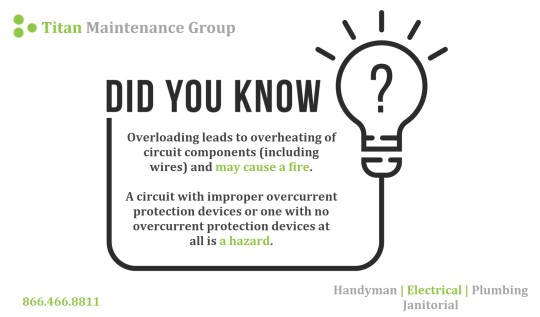Text
7 notes
·
View notes
Text
0 notes
Text
0 notes
Text
Techniques for Efficient Management of a Building’s Energy Use
The amount of money saved on energy costs is directly proportional to the efficiency of your company’s energy management program. Ensure your company uses energy efficiently by measuring and monitoring certain aspects of the building’s energy management system.
Building energy management systems (BEMS) is useful, but keeping an eye on certain parts of the system is critical. The meter isn’t the only thing that needs to be checked to see if your energy use is within your limits.
The most reliable and comprehensive energy metering system will track how much power is used in each room and how much power is delivered to each building section. As a bonus, it should be able to sound the alarm when something unexpected occurs. Energy consumption and usage data should be displayed clearly and transparently to facilitate strategic planning.
Real-time meter readings, utility data, and cloud-based data services are all elements that could be included in a more advanced metering system. Understanding your electricity bills, comparing energy rates between providers, and future forecasting trends become much simpler with the help of modern technology.
You need the right equipment to measure, report, and talk about energy consumption, whether you’re building a new building or updating the energy management system of an old one. A consolidated dashboard is a great investment for tracking progress toward energy-saving targets.
Making a coherent and precise picture of energy costs and consumption is essential for effective reporting. Using this information, your company may better make decisions based on hard evidence.
When developing and distributing reports for staff, embedded reporting systems are one of the most cost-effective options. They’re great for empowering workers and giving them an edge in the marketplace. They can be formatted to match your company’s branding to the tiniest detail. The time and effort spent on writing reports are reduced, while output is boosted, thanks to these technologies.
Observers have shown that a significant factor in a building’s energy use is the actions of its occupants. However, most of the studies on this subject have been conducted in very technical language. Inhabitants’ actions can impact the building’s HVAC, water heating, and electrical consumption.
Demographic characteristics, lifestyles, comfort perceptions, and limitations all have a role in shaping occupant behavior. Its susceptibility plays a role, too. Each of these factors is dependent on the economic standing of the tenants. For instance, a household with a higher income is in a better position to invest in energy efficiency measures than one with a lower payment.
There have been several attempts to analyze resident habits. Most of these studies focus on one action, such as opening a window.
Improve your facility’s energy management with the use of IoT-based analytics solutions. Using the information gathered by these systems, you may better regulate energy use, forestall service disruptions, and streamline upkeep procedures.
As business needs change, more and more organizations are looking to implement environmentally friendly strategies. The energy industry has undergone massive transformations to meet regulatory requirements. Many companies have also adopted environmental, social, and governance (ESG) measures. With the help of IoT analytics, organizations may better understand how they can accomplish their goals while positively affecting the environment.
Energy systems based on the Internet of Things have applications in many fields. For instance, sensors installed on assets can help detect impending problems like overheating and damage. The data can be used to foresee and plan for potential issues and their solutions. It also allows firms to assess a problem’s gravity, which is useful for mitigating its effects.
The employment status of an Energy Manager is variable, based on the company’s needs. The energy manager is responsible for keeping the building running according to local, state, and federal regulations.
Energy managers are tasked with analyzing current energy usage, developing plans to reduce energy consumption, and overseeing the implementation of all efficiency measures. Utility companies are brought in to help with these tasks. A renovation project manager also contributes to budgeting and planning.
Energy managers are commonly found in multinational enterprises, governmental organizations, and educational institutions. They might also be trained in mechanical or electrical engineering. They may have prior work experience in the corporate world and a keen eye for the technical aspects of HVAC, lighting, and plumbing systems.
0 notes
Text
1 note
·
View note
Text
1 note
·
View note
Text
1 note
·
View note
Text
Maintenance Schedules For Commercial Structures
An essential aspect of managing a business property is preventative maintenance. Avoiding issues before they arise reduces the cost of repairs and keeps your facility in excellent condition over time. By implementing preventative maintenance, facility management teams may lower two categories of risk to a commercial building: people and equipment.
Whether you are the owner of a commercial property, office complex, or shopping mall, it is crucial to make sure your facilities are in excellent condition. This can lengthen the useful life of the valuable assets in your building and lower the likelihood of future expensive repairs.
One of the most crucial strategies to raise your rental revenue is to keep your home in good shape. It will increase the value of your entire home and help you draw in and keep excellent renters.
The goal of all maintenance procedures, which come in a wide variety of forms, is to extend the equipment's useful life and keep it from malfunctioning. The particular requirements of your company will determine the optimal maintenance plan for your facility.
If you own a business property, you need to make sure the external construction is kept in good condition. This covers your building's eaves, arches, awnings, and canopies.
The optimal time to inspect a building's structures is once a month or more frequently as needed. This will enable you to remedy any problems or cracks that are evident rapidly.
Roof inspections are a crucial component of a preventative maintenance program. These can increase the longevity of your roof and lessen rain and wind damage.
The outside upkeep of your commercial property includes windows and doors a lot. They must be frequently examined to make sure they are working correctly and not wasting energy. They are crucial for tenant security as well. Keep small components like locks and hinges in excellent shape since they can fail fast.
Doors and windows have varying levels of durability depending on the materials used to create them. They don't need to be changed frequently, but it's essential to examine small parts and make quick fixes once a year. The danger of damage to glass windows increases during hurricane season. Fog between the panes is one indication of a seal failure that has to be looked for.
The secret to maintaining properly functioning electrical systems in business buildings is preventative maintenance. It can aid with the prevention of issues like electrical fires, which can cause harm and even death.
By increasing machine productivity and lowering utility costs, maintaining your electrical system can also result in financial savings. It also ensures that your company is compliant with all legal requirements and adheres to all applicable safety regulations.
Scheduling regular inspections with an electrician who holds a valid license are the best method to be sure your electrical systems are operating securely. They will be able to identify any problems before they worsen and can suggest fixes to keep your building secure.
The cost of repairing the heating and cooling system in a business building might be high. Repairs like this can be avoided by keeping the system in excellent operating order.
Preventative HVAC maintenance also maintains the highest possible air quality within a structure. Filters lessen the stress on your system by keeping airborne contaminants like dust, dander, and pollen out. Regular system maintenance boosts energy efficiency and extends system life.
Maintaining indoor air quality may increase customer attractiveness in your facilities and boost worker morale. Additionally, it can aid in reducing respiratory issues like asthma. The heating and cooling system should be inspected as part of preventative maintenance. By hiring a certified HVAC professional to complete this job, you can be confident that it will be done safely and in accordance with building codes.
1 note
·
View note
Text
0 notes
Text
0 notes
Text
1 note
·
View note





